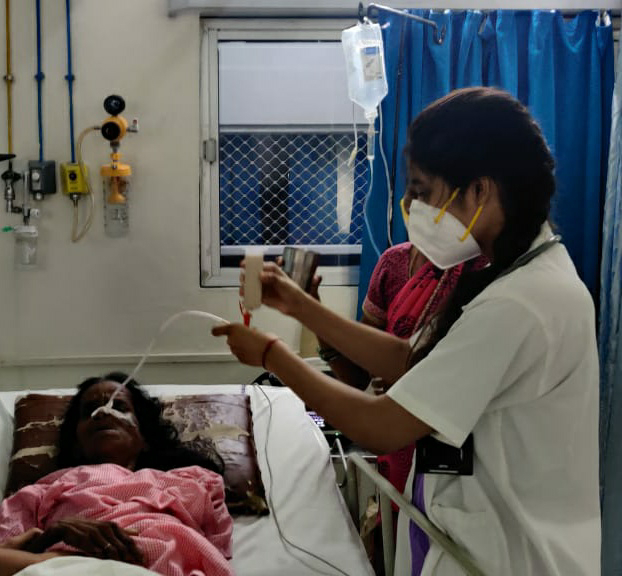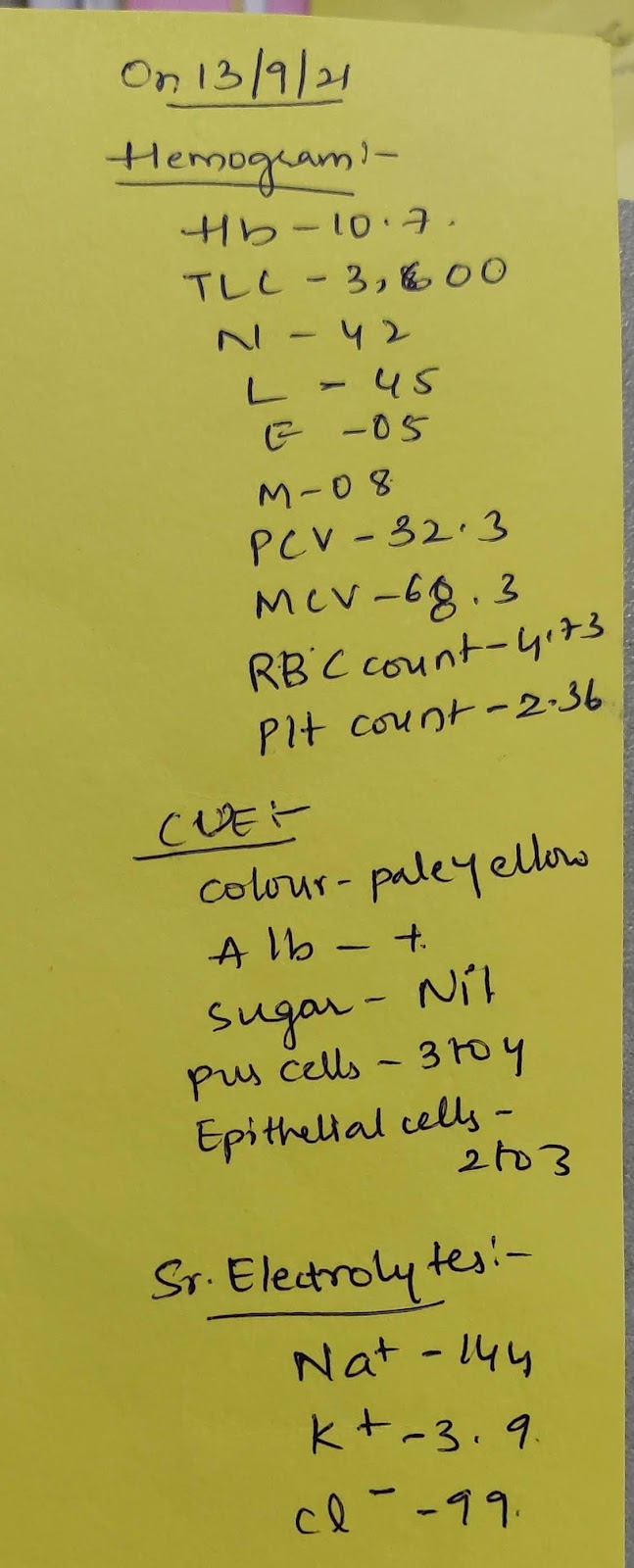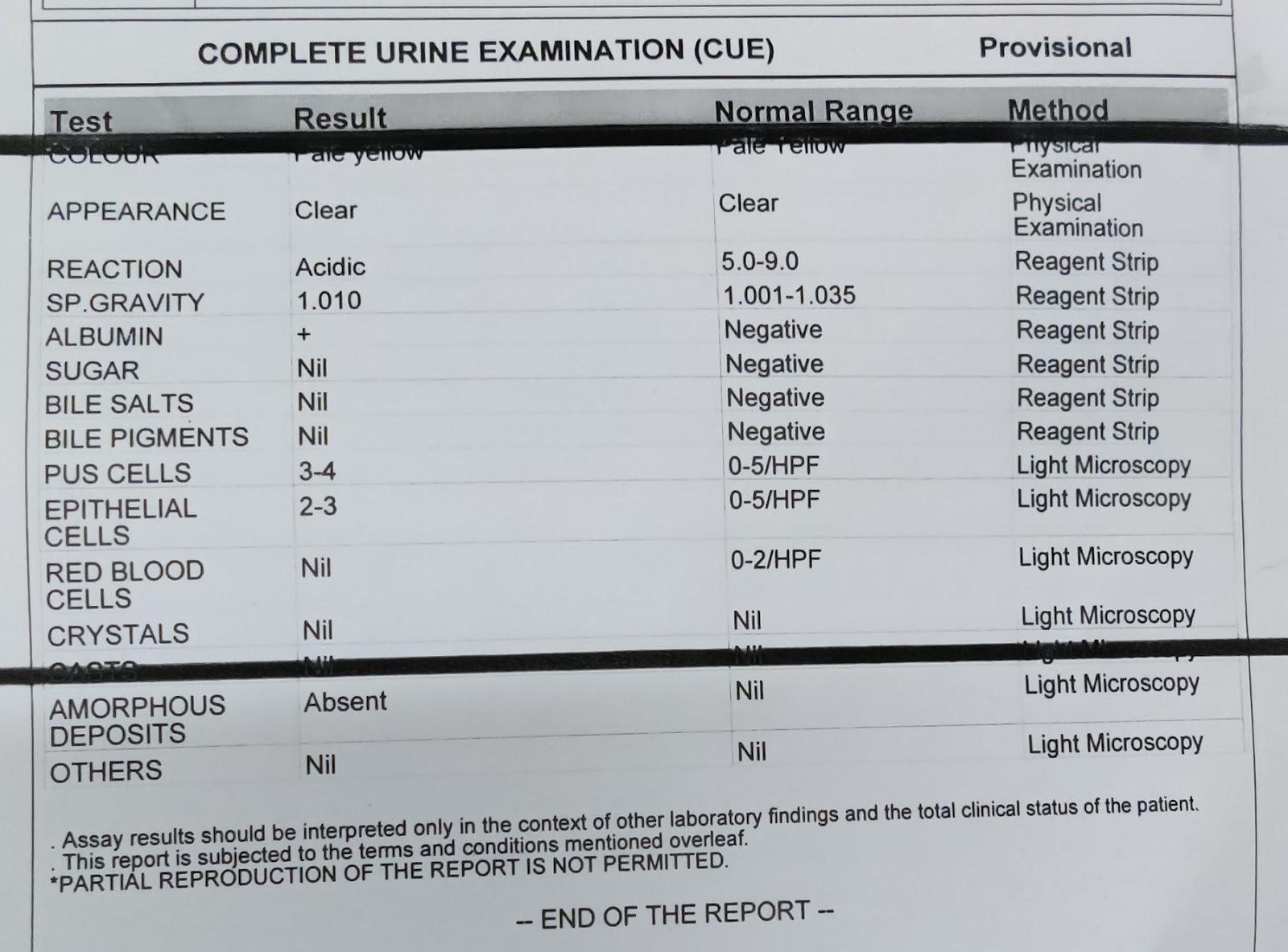AUGUST ASSESSMENT
LONG CASE
Q1) (Testing peer review competency in the active reader of this assignment) :
Please go through the long and short cases in the first link shared above and provide your critical appraisal of the captured data in terms of completeness, correctness and ability to provide useful leads to analyze the diagnostic and therapeutic uncertainties around the cases shared.
Please provide your peer review assessment on not only the the student's written case report but also the reading of the cases followed by the question answer session linked above in the video and share your thoughts around each answer by the student along with your qualitative insights into what was good or bad about the answer.
OVERVIEW
A 44 year old man presented with a 3-day history of bilaterally symmetrical rapidly progressive generalized edema.
he noticed he started feeling facial puffiness with pedal edema, the next morning he noticed facial puffiness.
At the same time, he also noticed that he developed bilaterally symmetric, pitting type pedal edema, extending upto the middle of his legs. He immediately presented to the hospital with these complaints.
APPRAISAL
The history was very detailing and the chronological reporting of the symptoms and signs points us to a proper diagnosis, and understanding in detail the condition and how it is affecting the activities and life of the patient.
Localisation was very clearly done.
The presence of frothy urine and edema strongly supports a glomerular pathology due to significant loss of protein and also decreased urine output .
The way he ruled out other causes and making differentials was very understandable and appreciable.
NEGATIVE POINTS
The history was so well taken along with every investigation required , every data was relevant and revealing the path we need to take forward in the case.
Thereby I find no negative points.
ANALYSIS
In my opinion this a 44 year old male with
3 day history of anasarca, frothy urine and gradually decreasing urine output, on a background of a 10 year history of chronic bilaterally symmetric polyarthritis (evidenced by severe pain, ed
ema and limitation of joint movements).
ema and limitation of joint movements).
Which may be due to
pre-renal and post-renal causes can be effectively ruled out from the absence of volume loss (vomiting, diarrhea, diuretic abuse or burns) and no history of acute retention of urine or lower urinary tract symptoms (LUTS) like frequency, urgency, hesitancy or precipitancy. The presence of frothy urine and edema strongly supports a glomerular pathology due to significant loss of protein and also decreased urine output. Isolated defects in tubular/interstitium are unlikely as such patients have a deficit in maintaining urinary concentration, which causes polyuria. Such a high range of proteinuria causing anasarca is also not seen with tubular/interstitial pathologies alone.
Can be diagnosed as
Bilaterally Symmetric Chronic Progressive Inflammatory Peripheral Polyarthritis with acute glomerulopathy.
SHORT CASE 1
OVERVIEW
This is a case of 49 year old English and Telugu language lecturer presented with a 2 month history of progressive asymmetric involuntary movements of his right index and middle fingers.
APPRAISAL
The history was very detailing and the chronological reporting of the symptoms and signs points us to a proper diagnosis, and understanding in detail the condition and how it is affecting the activities and life of the patient.
NEGATIVE POINTS
I Find no Negative points, the history was very relevant and revealing the path how to move forward with the case.
ANALYSIS
A middle aged man presenting with a 6 months history of gradually progressive, asymmetric rest tremor with autonomic features is provisionally diagnosed with
1. Idiopathic Parkinson's Disease Stage 1 with denovo HTN.
2. Multiple System Atrophy - Parkinsonian Type (MSA-P).
SHORT CASE 2
Overview
19 year old male resident of Nalgonda and currently studying intermediate ,came to opd with complaints of :
-Itchy Ring leisons over arms ,abdomen ,thigh and groin since 1 and half year .
-Purple stretch marks all over abdomen ,lower back ,upper limbs ,thighs since 1 year .
-Abdominal distension and facial puffiness since 6 months.
- Pedal edema since 3 months.
- Low back ache since 3 months .
- Feeling low , not feeling to talk to anyone.
- Weight gain and decreased libido since 3months.
- Loss of libido and erectile dysfunction since 2 months.
APPRAISAL
The history was very detailing and the chronological reporting of the symptoms and signs points us to a proper diagnosis, and understanding in detail the condition and how it is affecting the activities and life of the patient.
NEGATIVE POINTS
History is detailed and we'll explained.
It was in an understandable language even for a layman.
Explanations of how he concluded to a particular condition was note worthy.
I find no negative points.
ANALYSIS
In my analysis this is a case of
IATROGENIC CUSHINGS SYNDROME SECONDARY TO TOPICAL CLOBETASOL APPLICATION ALL OVER BODY FOR APPROXIMATELY ONE YEAR.
TINEA CORPORIS
DENOVO HTN .
LONG CASE
Q2: Testing scholarship competency of the examinees ( ability to read comprehend, analyze, reflect upon and discuss captured patient centered data):
Please analyze the above linked long and short cases patient data by first preparing a problem list for each patient in order of perceived priority (based on the shared data) and then discuss the diagnostic and therapeutic uncertainty around solving those problems.
Problem list of patient
A 44 year old, who presented with a 3 day history of anasarca and decreased urine output is diagnosed with -
Acute Glomerulonephritis, likely due to Secondary Amyloidosis due to Chronic Poorly Treated Seronegative Erosive Rheumatoid Arthritis.
Dilutional Hyponatremia secondary to Anasarca due to Glomerulonephritis
Hyperuricemia likely due to decreased Uric Acid Excretion Precipitating Gouty Arthritis
Anemia of Chronic Disease secondary to Poorly Treated Rheumatoid Arthritis.
TREATMENT GIVEN
Free water restriction for Hyponatremia
Tab. PREDNISOLONE P/O 20 mg OD
Tab FEBUXOSTAT P/O 80 mg OD
Haemodialysis for worsening renal dysfunction
Studies showing prednisolone role in RHUEMATOID ARTHRITIS
https://www.ncbi.nlm.nih.gov/pmc/articles/PMC1112762/
SHORT CASE
PROBLEM LIST
A 49 year old English and Telugu language lecturer presented with a 2 month history of progressive asymmetric involuntary movements of his right index and middle fingers.
movements often worsened with rest and abated with activity.
stiffness in his wrists (Right>Left), which has now ascended to his elbows. He says the stiffness is present throughout the range of motion. He also says that since the last 1 month, the same involuntary movements also started appearing in his left hand.
his walking has become difficult with small, short steps and a forward stoop.
he reports that he has been having difficulty in taking stairs up, in that he feels he sometimes might lose balance.
loss of sexual desire. He also says that since 2 months his bowel habits have been incredibly erratic, in that he sometimes has an immediate urge to defecate when he has tea and sometimes goes 2 to 3 days with constipation.
TREATMENT GIVEN
1. Tab. Syndopa Plus 125 mg QID.
2. Tab. Syndopa 125 mg CR OD.
3. Tab. Telma 40 mg OD.
According to my analysis:
No Drugs Are Proven to Slow PD Progression
Many agents have been proposed to slow PD progression, but no compelling evidence has surfaced in clinical trials. The American Academy of Neurology reviewed the evidenced-based literature in 2006 and concluded that, “No treatment has been shown to be neuroprotective.”
The advent of carbidopa/levodopa nearly 4 decades ago was associated with substantially increased longevity, documented in multiple studies of PD cohorts,6 and presumably due to mobilizing akinetic patients. This drug remains the most efficacious treatment. Although new PD drugs are sometimes advocated for initial treatment, they are much more expensive and, for seniors with PD, have few advantages over carbidopa/levodopa.
Recently, the addition of the catechol-O-methyltransferase inhibitor entacapone has been advocated for initial therapy as a combination drug with carbidopa/levodopa (Stalevo, Novartis Pharma, Basel, Switzerland). However, a recent randomized clinical trial failed to demonstrate advantages that would offset the considerable additional expense, compared to carbidopa/levodopa alone. 20 The bottom line is this: start therapy with 25/100 immediate-release carbidopa/levodopa.
SHORT CASE 2
PROBLEM LIST
19 year old male resident of Nalgonda and currently studying intermediate ,came to opd with complaints of :
-Itchy Ring leisons over arms ,abdomen ,thigh and groin since 1 and half year .
-Purple stretch marks all over abdomen ,lower back ,upper limbs ,thighs since 1 year .
-Abdominal distension and facial puffiness since 6 months.
- Pedal edema since 3 months.
- Low back ache since 3 months .
- Feeling low , not feeling to talk to anyone.
- Weight gain and decreased libido since 3months.
- Loss of libido and erectile dysfunction since 2 months
TREATMENT GIVEN
Ointment AMLORFINE .
FUSIDIC ACID CREAM.
SALINE COMPRESS OVER LEISONS.
Plan to start anti fungals on next visit once dose of steroids is reduced .
In my analysis;
https://pubmed.ncbi.nlm.nih.gov/26833215/
Q3) Testing competency in "Evidence based medicine": Include the review of literature around sensitivity and specificity of the diagnostic interventions mentioned and same around efficacy of the therapeutic interventions mentioned for each patient.
https://www.ncbi.nlm.nih.gov/pmc/articles/PMC1112762/ : LONG CASE.
Short case 1
https://pubmed.ncbi.nlm.nih.gov/26833215/
https://pubmed.ncbi.nlm.nih.gov/26833215/ : SHORT CASE 2.
Q4) Testing competency in patient data capture and representation through ethical case reporting/case presentation with informed consent :
Share the link to your own case report this month of a patient that you connected with and engaged while capturing his her sequential life events before and after the illness and clinical and investigational images along with your discussion of that case.
http://keerthykasa80.blogspot.com/2021/08/45-year-old-female-with-acute.html
Q 5) Testing scholarship competency in
logging reflective observations on your concrete experiences of this last month : (10 marks)
Reflective logging of one's own experiences is a vital tool toward competency development in medical education and research.
A sample answer to this last assignment around sharing your experience log of the month can be seen in one student's answer to Q10 in the May 2021 assignment in the link below:



